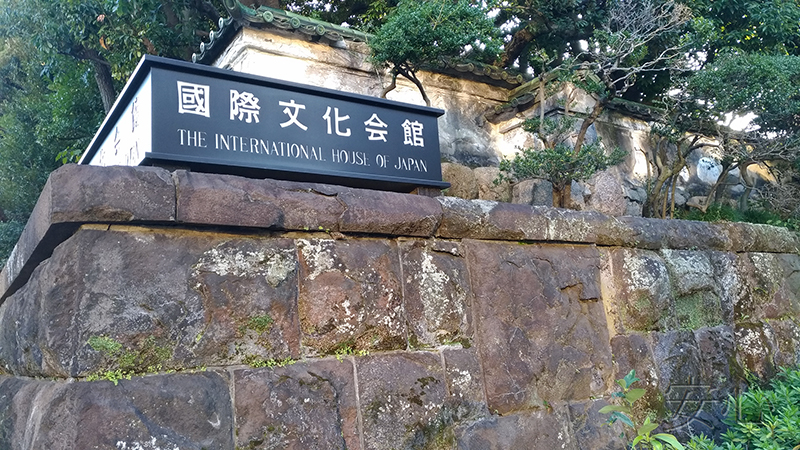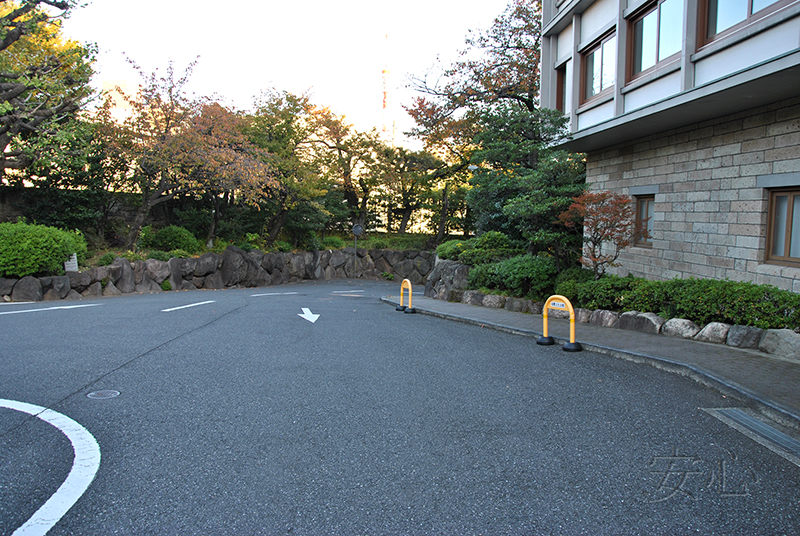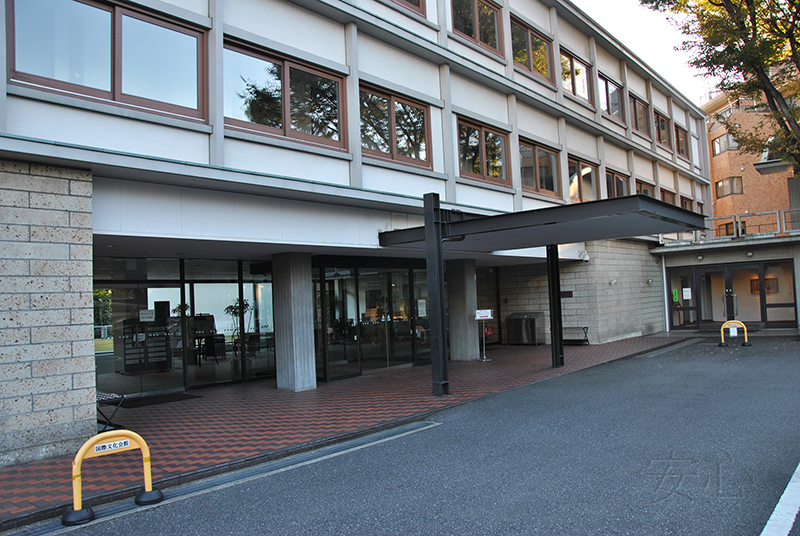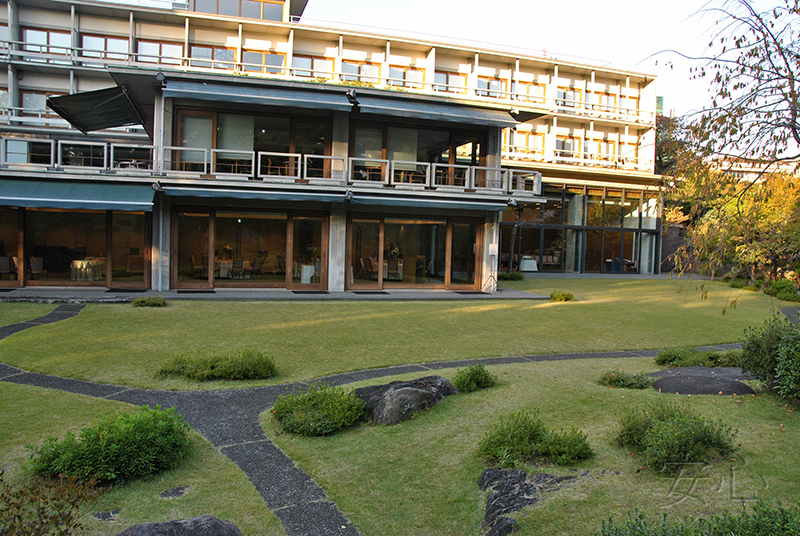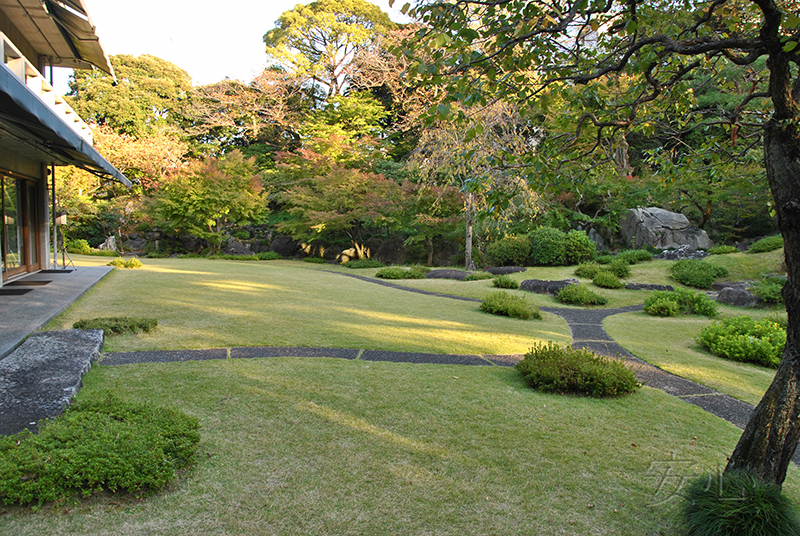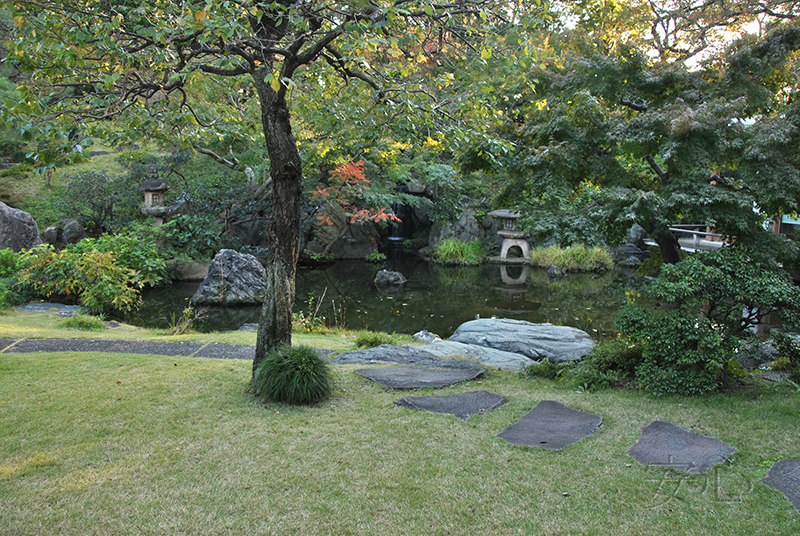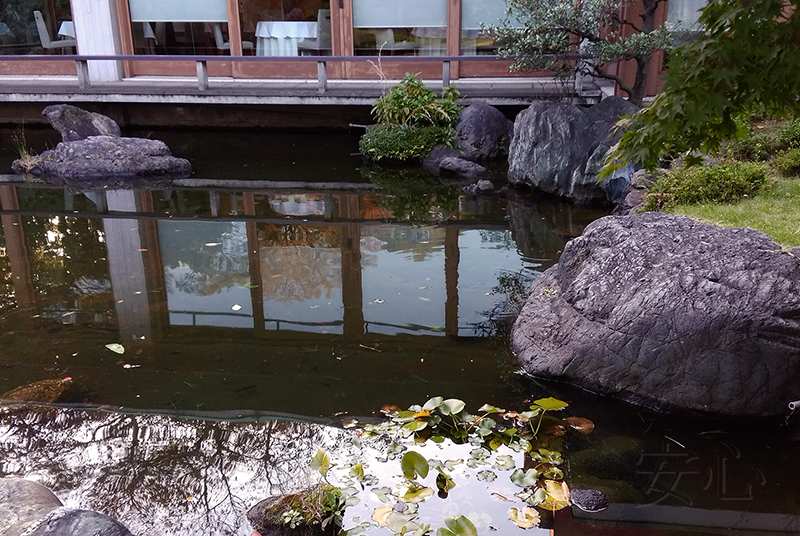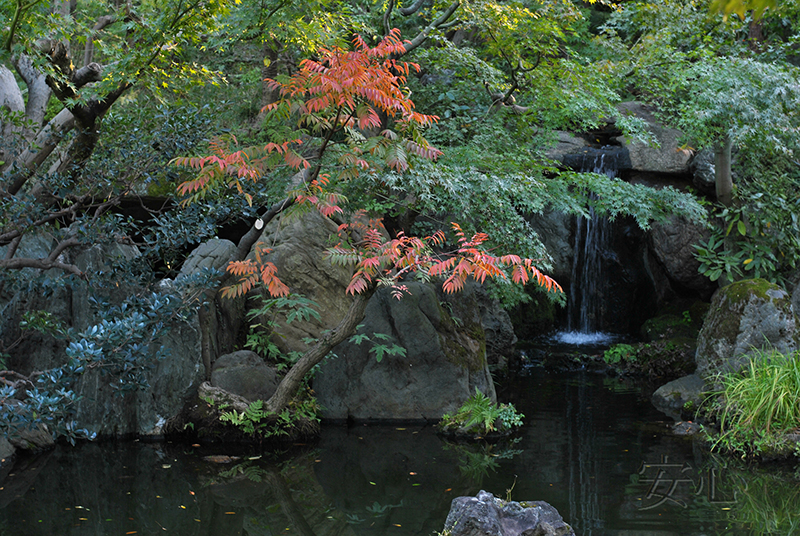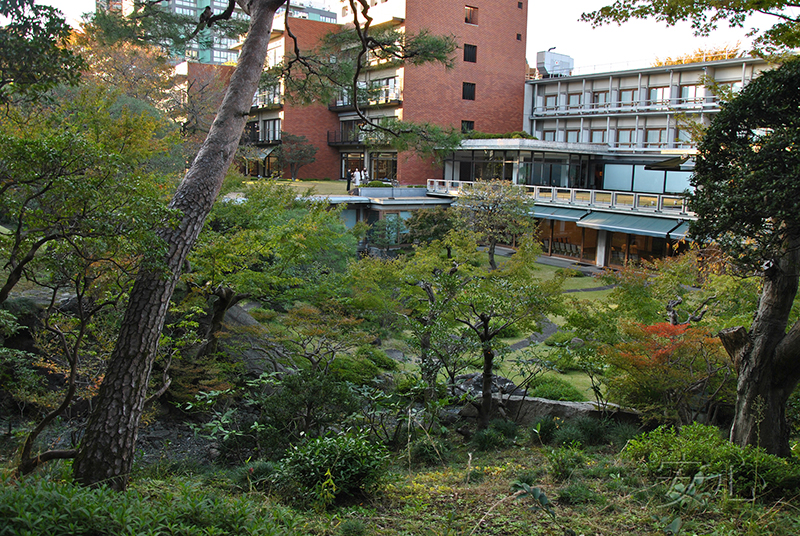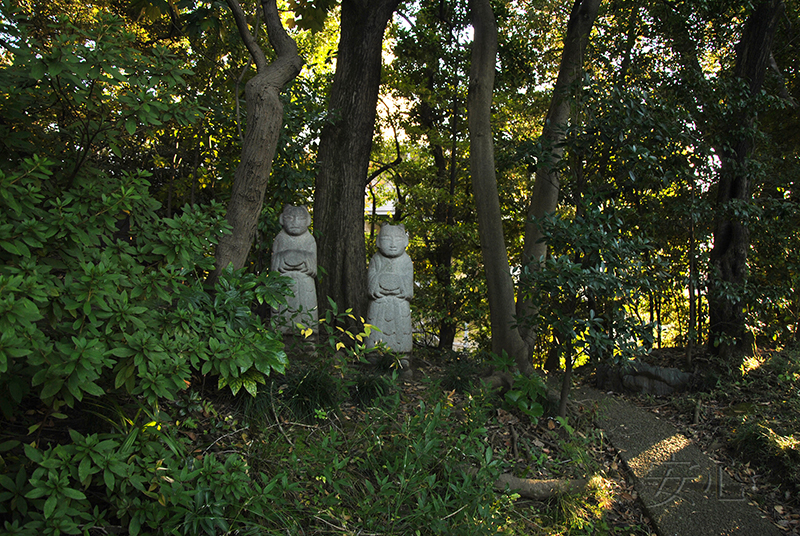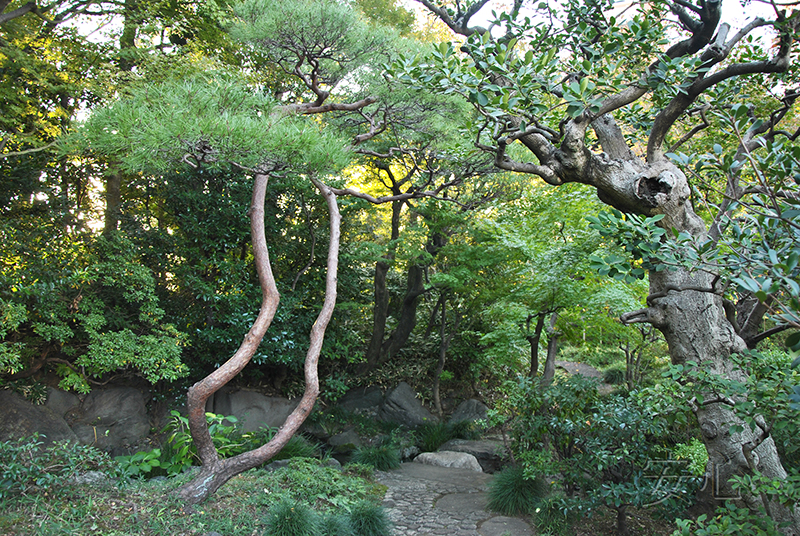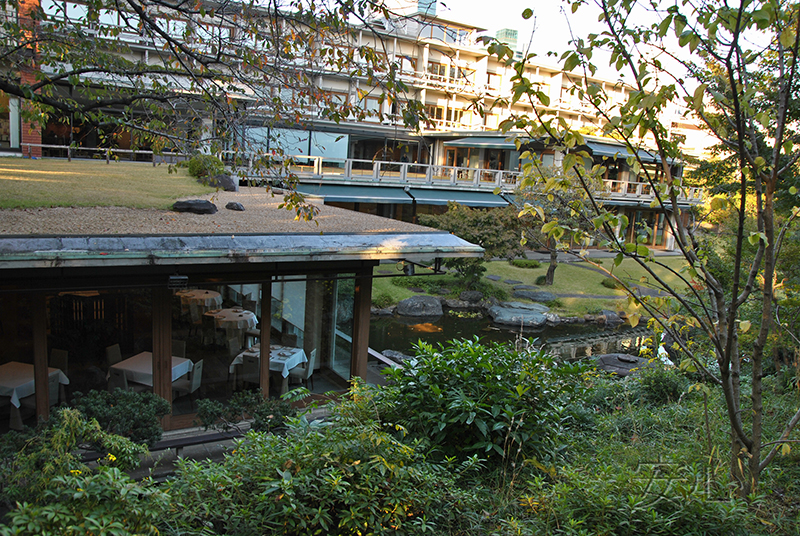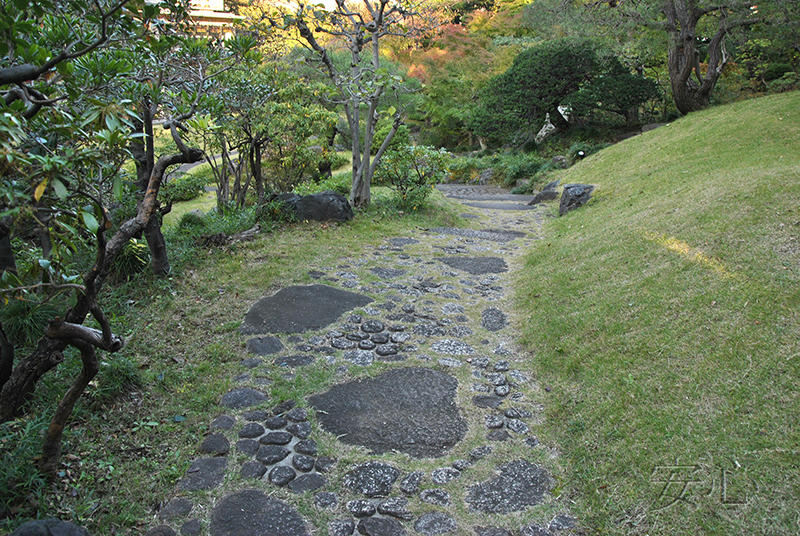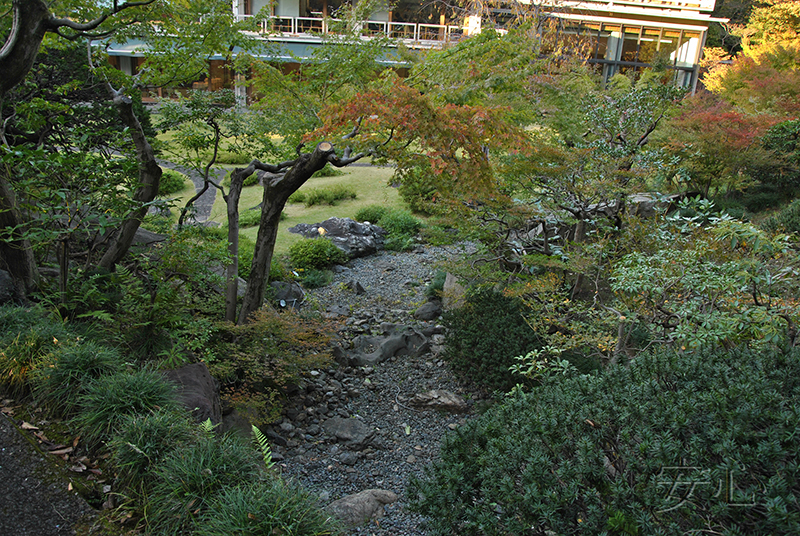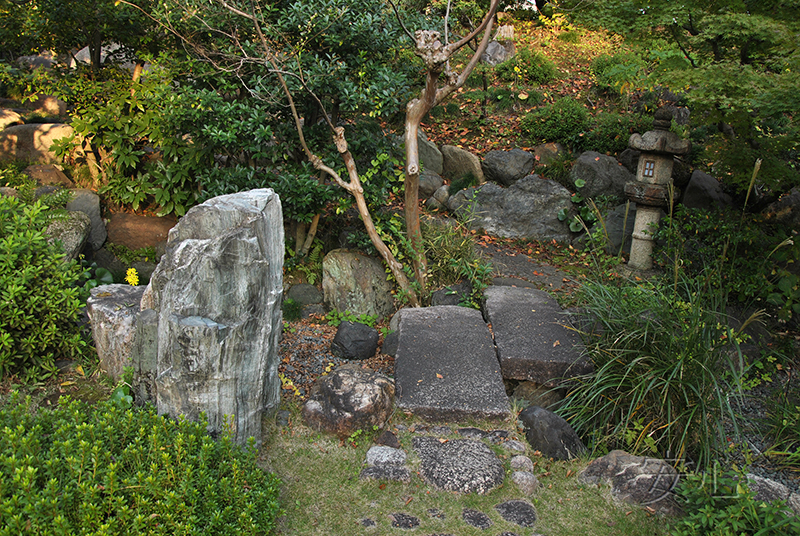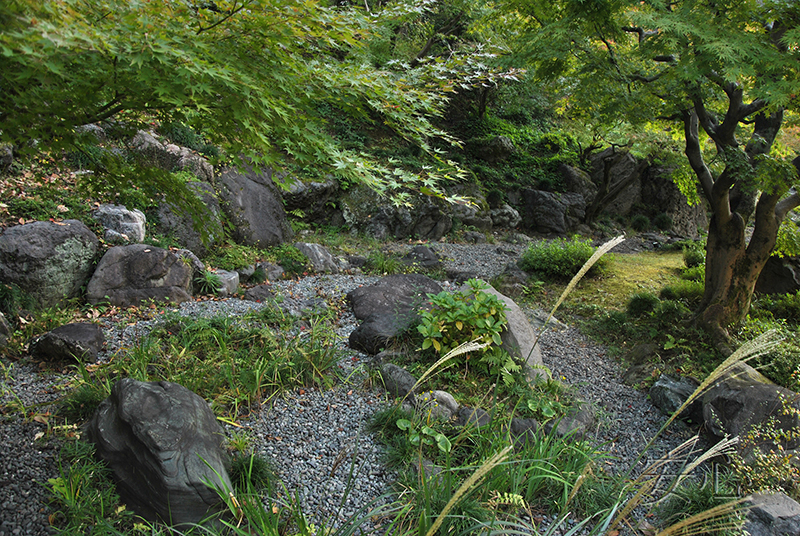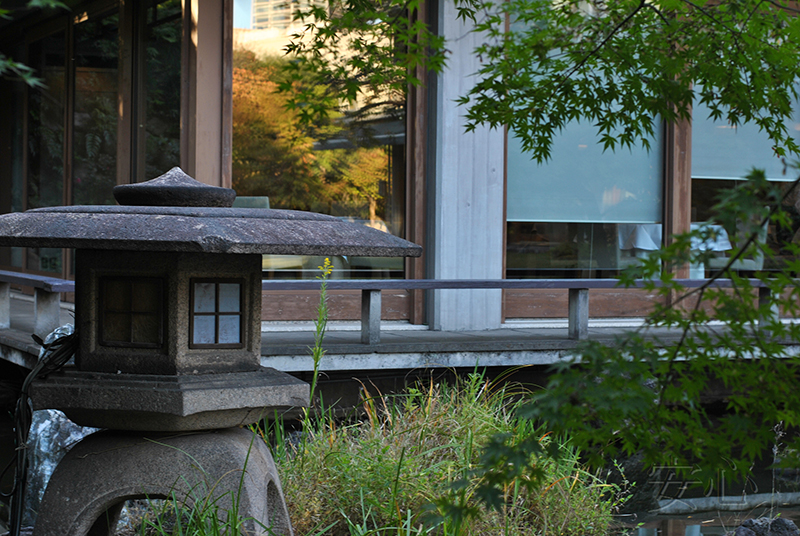
Kokusai Bunka Kaikan
(The garden of International House of Japan)
Previously, on the territory of the current International House of Japan there was a mansion belonging to the Kyogoku Clan. Early in the Meiji period, the estate was shifted to Inoue Kaoru, then foreign minister, who elaborate banquets and tea ceremonies, including for the imperial family. Then the house changed owners several times until it was handed over to the government after the end of World War II as an inheritance tax.
In 1951, John D. Rockefeller III visited Japan in a delegation to negotiate a peace treaty. It included also the issue of creating a cultural center and intellectual exchange programs. This subsequently led to the founding of the International House of Japan.
The International House was opened officially on June 1955. Twenty years later, the building was expanded, and in August 2006 it was registered as a tangible cultural property by the Agency for Cultural Affairs of Japan.
A wide road leads to the entrance of the International House of Japan, fenced on both sides by low retaining walls made of stone. Inside of the walls there are shrubs and low trees.
However, to get into the garden, you need to go through the building. Honestly, we did not know whether they would let us in, but the excitement was in vain: the man at the reception showed us with a smile which way to go.
The reverse side of the house looks completely different. And all this thanks to the beautiful garden, the author of which is one of the most famous masters of garden art of the XIX - XX centuries Ogawa Jihei. It was not by chance that he was invited as designer. The fact is that the last owners of the estate were the Iwasaki family, and they have repeatedly turned to Ogawa regarding the creation of the garden.
As in many of his other gardens, the author here expertly combined Japanese traditions and Western trends. The first thing we see when we leave the house is a big area covered with a lawn. The whole territory is cut into parts by dark narrow paths.
Look at the left side of the garden, doesn't it remind you of anything? I immediately had an association with the Murin-an garden: a lawn, low shrubs and a stream, which was replaced here by paths.
And on the right side of the garden Ogawa made a small pond adjacent to the outbuilding.
The outbuilding literally hangs over the water. The projection of the building above the pond was modeled after a motif which can be seen in scroll paintings of the Heian Period, which depicts zuridono, fishing pavilions located directly above the water.
Despite of its small size the pond looks just amazing. In the depths there is a waterfall, partially hidden by the foliage of trees. To his right of the waterfall is a Japanese stone lantern.
To see the waterfall closer, we decided to go upstairs.
From the top of the hill overlooks the building.
Then we went to the waterfall. We passed a pagoda, a couple of creatures, apparently guarding the garden, and soon reached the source.
From here the stream begins, later it falls from the stone down into the pond. We crossed it by the stones and reached the place from where it was possible to see the outbuilding.
Unfortunately, we came to the garden quite late, and it was already beginning to get dark. So it was necessary to go down.
On the way back we found that there is not only a real creek, but also dry one. But it is located on the other side. If you look at the garden from house, you can hardly notice a dry stream, as it is hidden by bushes and trees.
Ogawa Jihei not only created a beautiful garden, he also planned our movements around it. After all, it only seems that the whole territory can be seen at once. The first thing a person notices when he leaves the building is a green lawn. It seems that everything is clear here, and we instinctively turn towards the pond, because it is just partially visible. Having reached the pond, we notice a waterfall. However, there is no approach to it. This makes us go upstairs and then we can see everything from top. On the way back, we find a dry stream, which you notice only when you come close. Thus, the garden seems much larger than it really is.
I would like to note the amazing naturalness of this gardens. Despite the perfectly flat and low lawn, clearly marked lines of paths, well-thought-out stones, at the top we see an artistic mess. And the dry stream gives the impression of being something abandoned, as if there had actually been water here, but for several years now the stream has dried up and the place is gradually overgrowing. This combination of two opposites, however, does not cause any discomfort, on the contrary, this garden gives a sense of harmony and delight.
Garden Information:
Address: 5-11-16 Roppongi, Minato-ku, Tokyo, 106-0032, JAPAN
Opening hours: from 9 a.m. to 5 p.m.
anshin©2011All rights reserved. When using the materials of the site, reference is obligatory.
Proposals for co-operation, as well as comments and suggestions on the site please send to the address: anshinsad@gmail.comtel: +7 (965) 121-80-60, 10am-20pm
